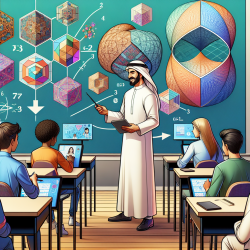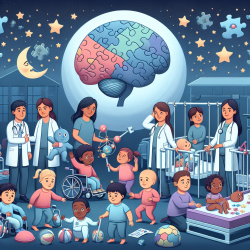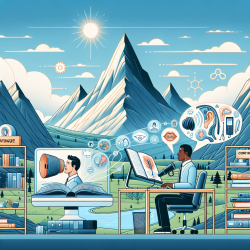Introduction to Diffeomorphic Mapping in Special Education
In the realm of special education, the integration of advanced technological methodologies can significantly enhance the learning experiences of students with diverse needs. One such methodology, derived from the field of biomedical imaging, is the concept of diffeomorphic mapping via geodesically controlled active shapes (GDAS). This advanced technique, primarily used in medical imaging for robust mapping, can be adapted to special education to improve the precision and effectiveness of individualized education plans (IEPs).
Understanding the Research
The research paper titled "Robust Diffeomorphic Mapping via Geodesically Controlled Active Shapes" by Tward et al. (2013) explores the use of GDAS in segmenting complex anatomical structures. This technique involves the application of large deformation diffeomorphic metric mapping (LDDMM) to create accurate representations of subcortical structures. The study demonstrates the robustness of GDAS in handling variations in MRI data, which can be translated into educational settings to manage diverse learning needs.
Applications in Special Education
Adapting GDAS for special education involves using its principles to enhance the development and implementation of IEPs. Here are some ways this can be achieved:
- Individualized Learning Plans: By applying GDAS principles, educators can create more precise learning plans that consider the unique cognitive and developmental trajectories of each student.
- Data-Driven Decision Making: Just as GDAS uses data to optimize mapping, educators can use student performance data to adjust teaching strategies dynamically.
- Enhanced Collaboration: The robust framework of GDAS can facilitate better communication and collaboration among educators, therapists, and parents, ensuring that all stakeholders are aligned in their approach to supporting the student.
Encouraging Further Research
While the direct application of GDAS in special education is still in its nascent stages, the potential benefits warrant further exploration. Educators and researchers are encouraged to delve deeper into this field, exploring how the principles of diffeomorphic mapping can be adapted to educational contexts. This could involve pilot studies, cross-disciplinary collaborations, and the development of new educational technologies that incorporate these advanced mapping techniques.
Conclusion
Integrating advanced methodologies like GDAS into special education holds promise for creating more effective and personalized learning experiences. By leveraging the robustness and precision of diffeomorphic mapping, educators can better address the diverse needs of students, ultimately leading to improved educational outcomes.
To read the original research paper, please follow this link: Robust Diffeomorphic Mapping via Geodesically Controlled Active Shapes.










